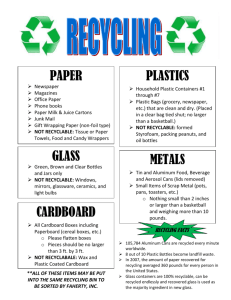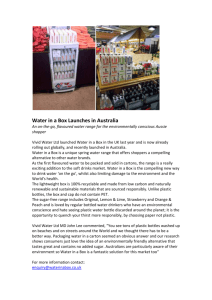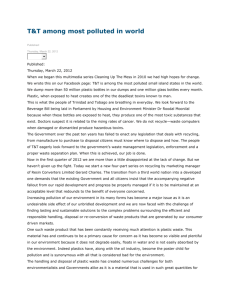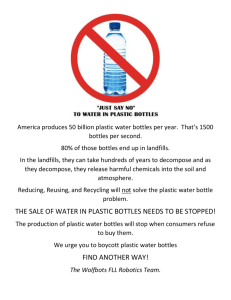Visit Report Eco Plastics
advertisement
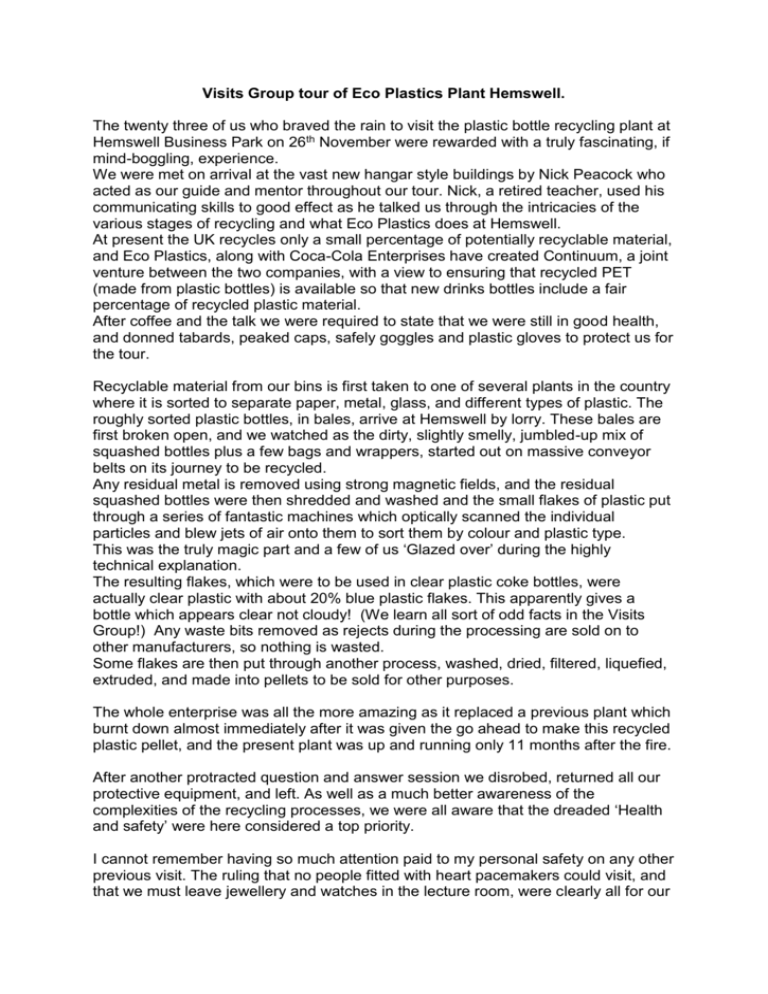
Visits Group tour of Eco Plastics Plant Hemswell. The twenty three of us who braved the rain to visit the plastic bottle recycling plant at Hemswell Business Park on 26th November were rewarded with a truly fascinating, if mind-boggling, experience. We were met on arrival at the vast new hangar style buildings by Nick Peacock who acted as our guide and mentor throughout our tour. Nick, a retired teacher, used his communicating skills to good effect as he talked us through the intricacies of the various stages of recycling and what Eco Plastics does at Hemswell. At present the UK recycles only a small percentage of potentially recyclable material, and Eco Plastics, along with Coca-Cola Enterprises have created Continuum, a joint venture between the two companies, with a view to ensuring that recycled PET (made from plastic bottles) is available so that new drinks bottles include a fair percentage of recycled plastic material. After coffee and the talk we were required to state that we were still in good health, and donned tabards, peaked caps, safely goggles and plastic gloves to protect us for the tour. Recyclable material from our bins is first taken to one of several plants in the country where it is sorted to separate paper, metal, glass, and different types of plastic. The roughly sorted plastic bottles, in bales, arrive at Hemswell by lorry. These bales are first broken open, and we watched as the dirty, slightly smelly, jumbled-up mix of squashed bottles plus a few bags and wrappers, started out on massive conveyor belts on its journey to be recycled. Any residual metal is removed using strong magnetic fields, and the residual squashed bottles were then shredded and washed and the small flakes of plastic put through a series of fantastic machines which optically scanned the individual particles and blew jets of air onto them to sort them by colour and plastic type. This was the truly magic part and a few of us ‘Glazed over’ during the highly technical explanation. The resulting flakes, which were to be used in clear plastic coke bottles, were actually clear plastic with about 20% blue plastic flakes. This apparently gives a bottle which appears clear not cloudy! (We learn all sort of odd facts in the Visits Group!) Any waste bits removed as rejects during the processing are sold on to other manufacturers, so nothing is wasted. Some flakes are then put through another process, washed, dried, filtered, liquefied, extruded, and made into pellets to be sold for other purposes. The whole enterprise was all the more amazing as it replaced a previous plant which burnt down almost immediately after it was given the go ahead to make this recycled plastic pellet, and the present plant was up and running only 11 months after the fire. After another protracted question and answer session we disrobed, returned all our protective equipment, and left. As well as a much better awareness of the complexities of the recycling processes, we were all aware that the dreaded ‘Health and safety’ were here considered a top priority. I cannot remember having so much attention paid to my personal safety on any other previous visit. The ruling that no people fitted with heart pacemakers could visit, and that we must leave jewellery and watches in the lecture room, were clearly all for our safely and indicated that this was an efficient organisation who took absolutely no chances. Alan Campion



